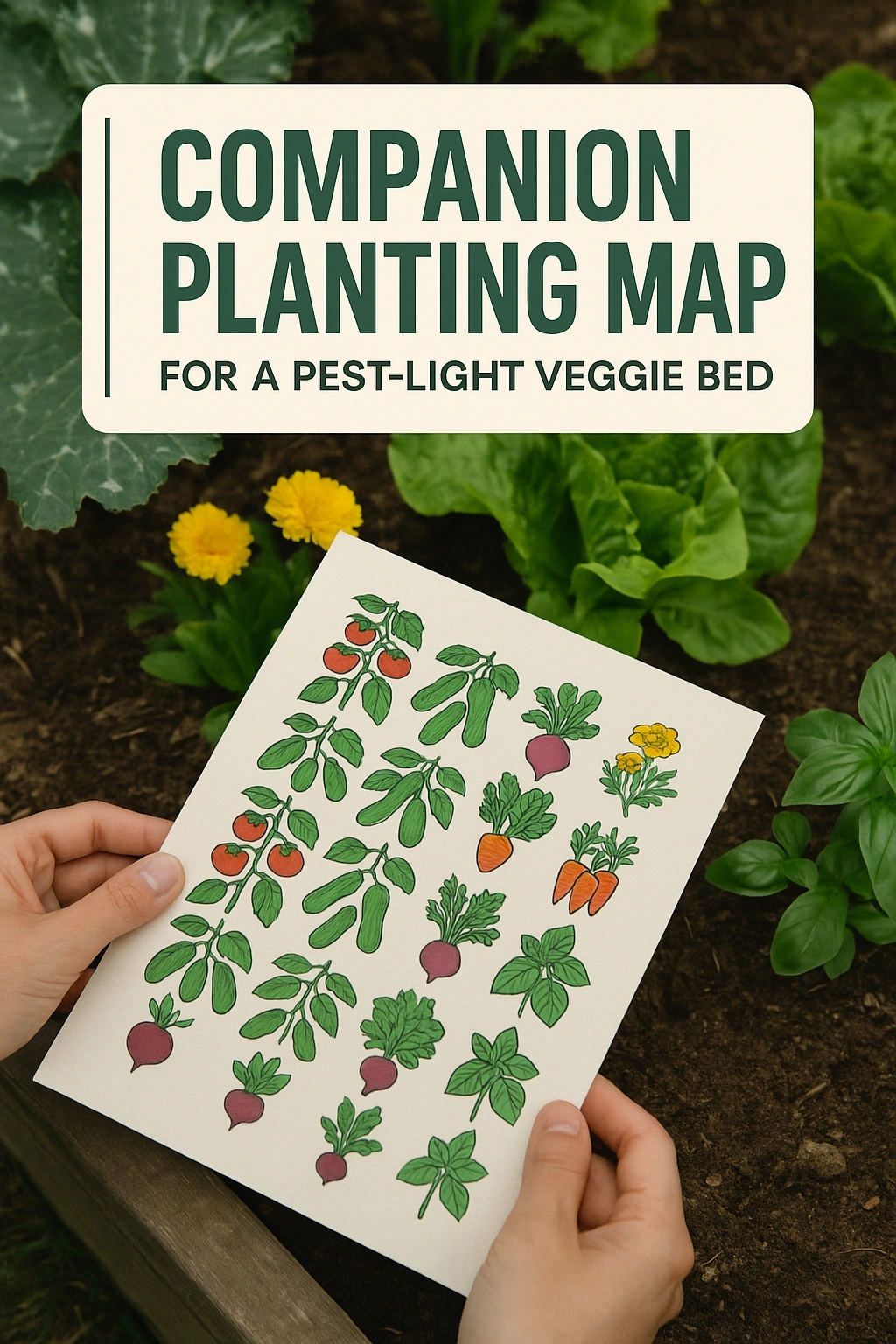
Companion planting is a time-honored gardening technique that can significantly enhance the health and productivity of your vegetable garden. By strategically placing plants together, you can create a harmonious ecosystem that naturally deters pests and promotes growth. In this article, we will explore how to create a companion planting map specifically designed for a pest light vegetable bed, providing practical insights that will help you cultivate a thriving garden.
The Basics of Companion Planting
Companion planting involves pairing different plants that can benefit each other in various ways. These benefits may include repelling pests, improving nutrient uptake, or enhancing flavor. Understanding the relationships between plants is crucial for creating an effective companion planting strategy. For instance, certain herbs can repel pests that typically affect vegetables, while some plants can attract beneficial insects that help pollinate or control pest populations.
Choosing the Right Vegetables for Your Pest Light Bed
When establishing a pest light veggie bed, it is essential to select vegetables that not only thrive together but also are less prone to pest infestations. Some vegetables are naturally more resistant to pests due to their growth habits or chemical compositions. Here are some vegetables that are known for their pest resistance:
Resilient Vegetables to Consider
- Carrots: Their strong scent can deter some pests.
- Garlic: Known for its ability to repel aphids and other insects.
- Onions: Their pungent aroma can help keep pests away.
- Radishes: A fast-growing option that can act as a trap crop for pests.
- Swiss Chard: Offers a robust structure that can withstand pest attacks.
Designing Your Companion Planting Map
Creating a companion planting map involves careful planning and layout. Begin by sketching out the dimensions of your garden bed and identifying where each vegetable will be planted. Your design should account for sunlight, water needs, and the natural growth patterns of each plant. Here are some steps to guide you:
Steps to Create Your Map
- Measure Your Garden Bed: Determine the size of your planting area to ensure proper spacing.
- Choose Your Plants: Select compatible plants based on their growth requirements and pest deterrent properties.
- Map Out Plant Locations: Arrange plants in a way that maximizes space and sunlight exposure.
- Consider Height and Spread: Taller plants should be placed where they won’t shade shorter plants.
Effective Pairings for Your Veggie Bed
To maximize the benefits of companion planting, it is essential to know which plants work well together. Here are some effective pairings that can help create a pest light environment:
Beneficial Plant Combinations
- Tomatoes and Basil: Basil enhances the flavor of tomatoes and repels pests like whiteflies.
- Carrots and Onions: Onions deter carrot flies, while carrots can help break up the soil for onions.
- Beans and Corn: Beans fix nitrogen in the soil, benefiting corn, while corn provides support for climbing beans.
- Cabbage and Dill: Dill attracts beneficial insects that prey on cabbage pests.
Maintaining Your Pest Light Veggie Bed
Once your companion planting map is in place and your plants are growing, proper maintenance is crucial for long-term success. Regular care will help sustain the benefits of companion planting and keep pests at bay. Here are some maintenance tips to follow:
Essential Maintenance Practices
- Regular Watering: Ensure consistent moisture, especially during dry spells.
- Mulching: Apply organic mulch to suppress weeds and retain soil moisture.
- Pest Monitoring: Regularly check for signs of pests and take action promptly if detected.
- Crop Rotation: Rotate crops each season to prevent soil depletion and pest buildup.
Common Challenges in Companion Planting
While companion planting offers many benefits, it can also pose challenges. Understanding these potential issues will help you address them effectively. Here are some common challenges faced by gardeners:
Identifying and Overcoming Challenges
- Plant Compatibility: Not all plants benefit from being near each other; research compatibility to avoid negative interactions.
- Pest Resistance Variability: Some plants may not be as pest-resistant as expected, so monitor your garden closely.
- Soil Nutrient Management: Different plants have varying nutrient needs, which can lead to deficiencies if not managed.
- Space Limitations: In smaller gardens, it may be challenging to achieve ideal companion plant arrangements.
Frequently Asked Questions
What is the purpose of companion planting?
The primary purpose of companion planting is to create beneficial relationships between plants that can enhance growth, deter pests, and improve overall garden health. By strategically selecting plant pairings, gardeners can naturally minimize pest problems and maximize yield.
Can all vegetables be grown together?
No, not all vegetables are compatible. Some plants can inhibit the growth of others or attract pests. It is essential to research and understand which plants work well together and which do not to avoid any adverse effects.
How do I know which plants repel pests?
Many resources are available that list plants known for their pest-repelling properties. Additionally, local gardening centers and extension services can provide valuable information tailored to your region’s specific pest issues.
Is there a time frame for planting companion plants?
Timing can vary depending on the specific plants and your growing season. Generally, it is best to plant companion crops at the same time to ensure they can provide mutual benefits throughout the growing season.
What are some signs that companion planting is working?
Signs that companion planting is effective include reduced pest populations, healthier plants, and increased yields. Additionally, observing beneficial insects in your garden can indicate a successful companion planting strategy.
